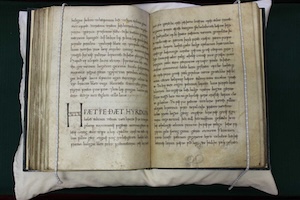In the 12th century, jousting was sometimes not allowed because it distracted from the excitement of the other events, especially the mêlée, but Edward II of England in 1309 banned all forms of tournament except the joust. For him, it was more exciting to watch than the Pas d'armes or Tupinaire or Quintain, easier to see than the Mêlée because the men were higher off the ground and there were only two, a bit safer because there was a specific goal.
Some people spoke out against any form of tournament. Pope Innocent II at Clermont forbade Christian burial for anyone killed in a tournament. He was all for warfare against the heathen, but did not want Christians endangering each other's lives. And tournaments could be dangerous; just a few posts back we learned of someone dying because of a tournament. Henry II imposed a ban on tournaments because knights traveling from far and wide to join one were indulging in harassment of the population along the way. His son Richard, however, loved fighting, and established six locations where they were permitted to hold tourneys (and established a fee structure—payable to the Crown—for those who wanted to hold them and participate).
Richard's brother, John, and John's son, Henry III, made jousting more difficult with restrictions that encouraged safety but limited the excitement. Some of the rules that developed over time were necessary, to help figure out who won. After a day of pairs of knights going against each other, the winners could be declared as follows:
1st place: unhorsing the opponent; extra if the horse falls down.
2nd place: breaking lances
3rd place: most striking of the opponent's visor (this was particularly dangerous, but got you points)
4th place: breaking the most spears
There were also rules that could disqualify you:
Striking a horse
Striking a man's back from behind him
You could also be penalized for breaking your spear on the opponent's saddle (a forbidden target).
Some of the last tournaments and jousts took place during the reign of Henry VIII, who used elaborate ones to celebrate momentous events, such as the birth of a son.
Next time, I want to talk about Pope Innocent II and his Second Lateran Council that forbade jousts and tournaments.





















du.jpg)




